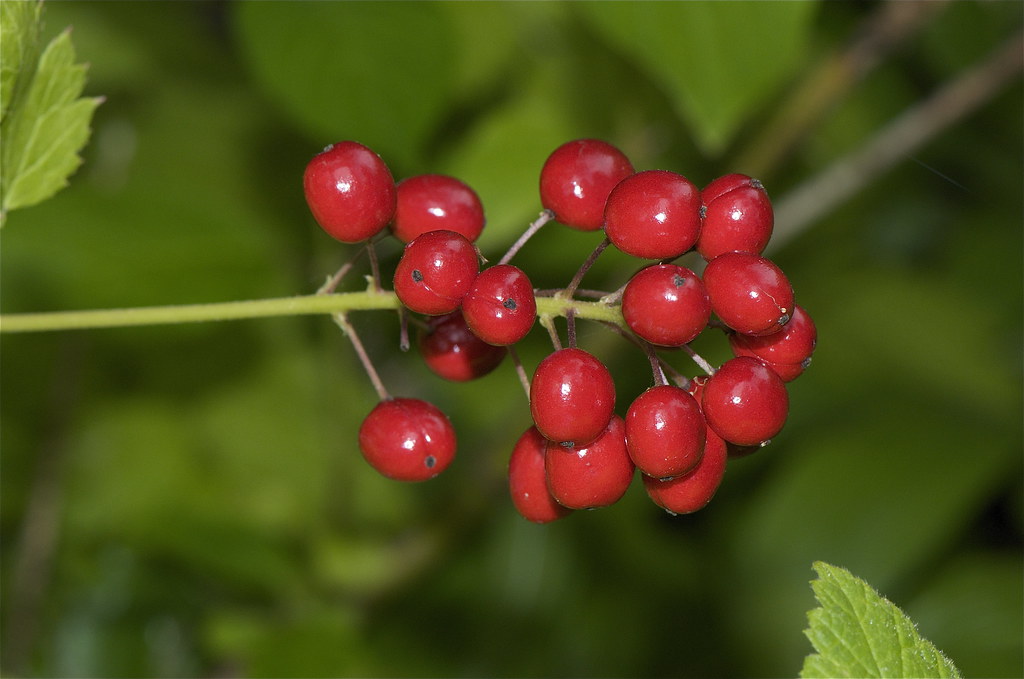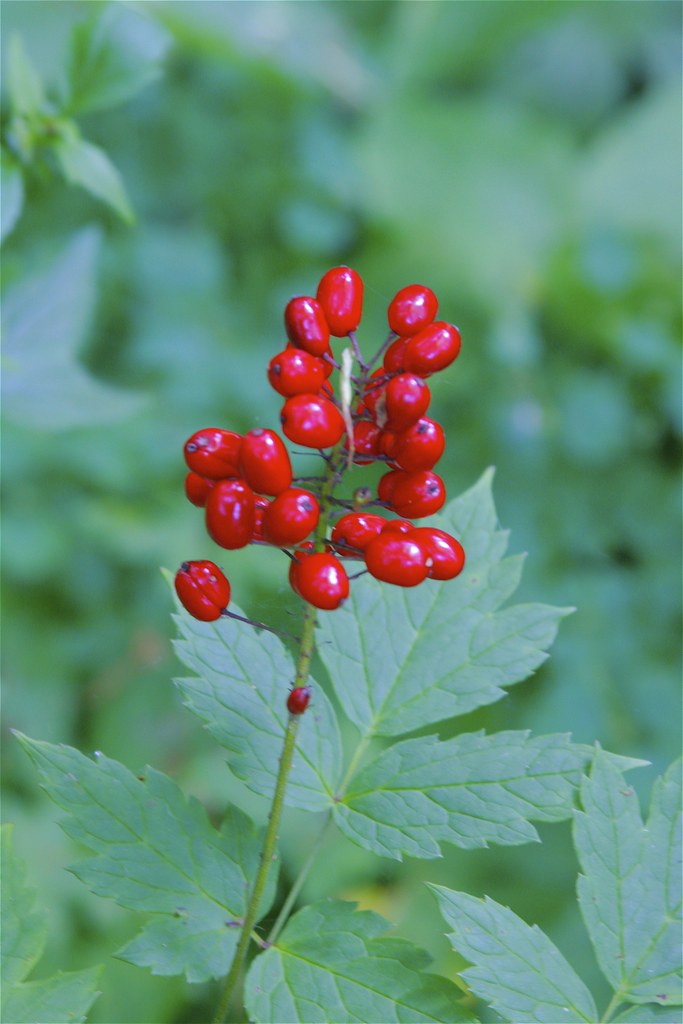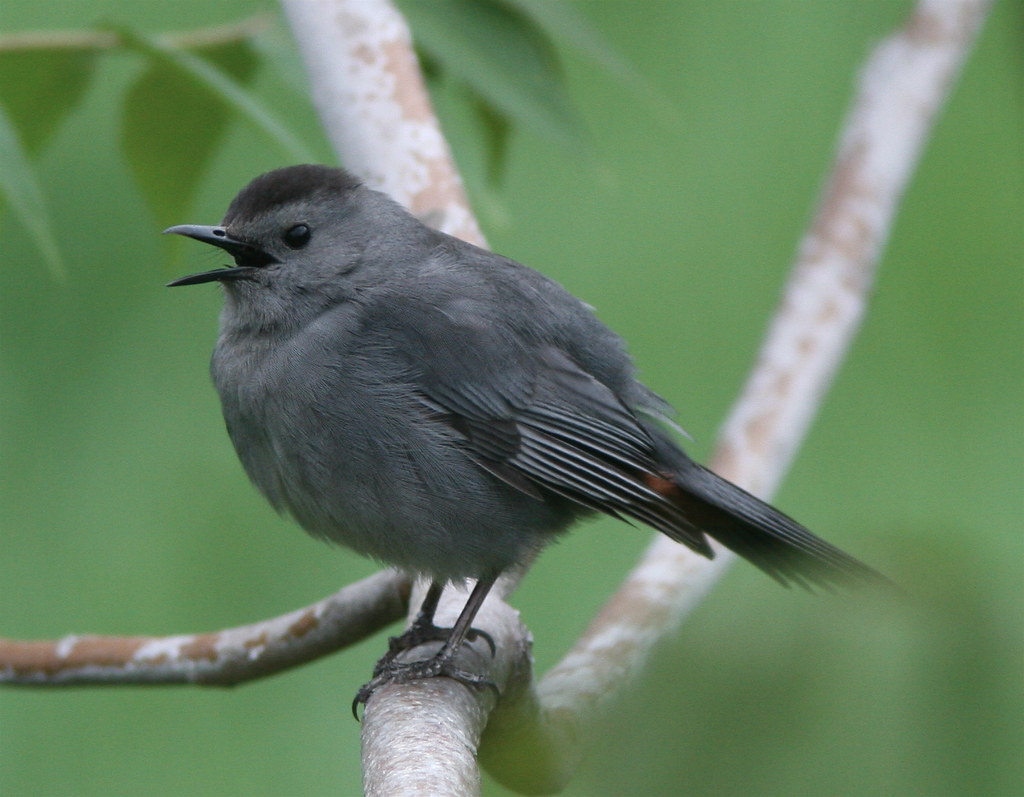Red Baneberry
Actaea rubra
Ranunculaceae (Buttercup Family)
+flower.JPG) Look in rich, moist thickets and shaded forests for this striking, relatively uncommon plant. It can grow up to three feet high, with flowers appearing in early to mid-summer as fluffy clusters atop tall stalks. The white flowers have lots of antenna-like stamens that wave out past the small petals. Soon, the flowers fade and stalks of bright red berries take their place.
Look in rich, moist thickets and shaded forests for this striking, relatively uncommon plant. It can grow up to three feet high, with flowers appearing in early to mid-summer as fluffy clusters atop tall stalks. The white flowers have lots of antenna-like stamens that wave out past the small petals. Soon, the flowers fade and stalks of bright red berries take their place.
The species and subspecies of Actaea are closely related and not always easy to distinguish. There is a white baneberry (A. pachypoda), but the red baneberry species (A. rubra) sometimes bears white fruit as well. True white baneberries have thicker pedicels (flower-bearing stalks) than the "red" species. You can recognize Actaea berries by the little buttons on their ends. The white berries, with their pupil-like spots, have been used in the past as eyes for children's dolls, hence one of the common names for the plant, "Doll's Eyes". Kind of creepy looking, if you ask me.
Found through the northern temperate zones of North America and Eurasia. In Montana, it's most likely to be spotted in the southern and western parts of the state (see the USDA range map)
The family name Ranunculaceae comes from the Latin rana, frog, in reference to its members' affinity for wet places. Actaea is the Latin name for a generally strong-smelling plant. The Greek aktea is the word for the elderberry tree (Sambucus sp.), whose leaves the baneberry resembles. Rubra is a ubiquitous species name meaning "red". The common name "baneberry" refers to its toxicity--bane ultimately comes from the ancient root gwhen-, "to murder or wound".
You might also hear baneberry called red cohosh, necklaceweed or snakeberry.
Tidbits:
All parts of this plant are poisonous, with the toxin protoanemonin most concentrated in the berries and roots. Symptoms include "the usual"--vomiting, diarrhea, dizziness, stomach cramps--but the toxin ultimately acts on your heart, and can cause circulatory failure. So don't eat it! That said, people have been eating this plant for thousands of years. North American Indian tribes have used a decoction of the roots to treat rheumatism, coughs and colds, and to improve the appetite. It is said to increase milk production after childbirth, and decrease excessive menstrual bleeding. A poultice of chewed leaves was used to soothe wounds, and there are several references to it being ingested to soothe stomach pains caused from swallowing hair. (Huh?) But once again, unless you're a trained professional, please, don't eat it. Eating as few as two berries can cause severe pain, and a few more can mean respiratory failure and cardiac arrest.
Baneberry is not, however, poisonous to livestock. Sheep and horses will graze on it when there's not much else around, and elk will eat the foliage in the fall (Actaea foliage stays green late in the season, after most plants have withered in the frost). Birds like Grouse, Gray Catbird (seen here), and American Robins also relish the berries, as do mice, squirrels, chipmunks and voles.
Wild Gardening:
Despite its murderous name, baneberry makes an excellent woodland garden perennial. The foliage is lush, the flowers and fruit are highly ornamental, and it can take part to full shade. It provides cover for small mammals and will attract songbirds to your yard. Plants are not hard to find at nurseries, particularly those specializing in natives. If you do decide to try propagating from seed, remember that, like many wildflowers, they need a period of cold stratification before they'll germinate, and it might take two seasons to get them to sprout. Naturalize along with other moisture-loving species like twinberry, horsetail, thimbleberry, sedge, alder and aspen for a lush, verdant woodland garden.


.jpg)























